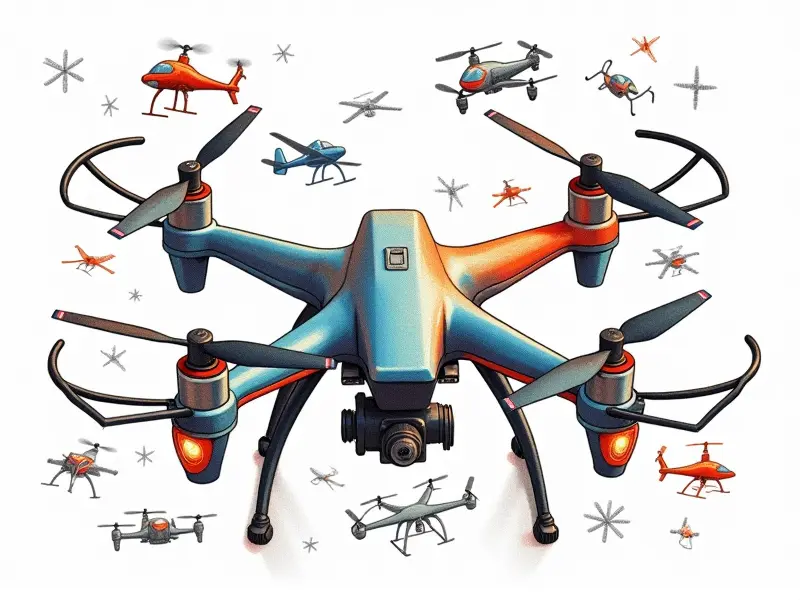Can drones fly in bad weather?

Can Drones Tackle Stormy Weather?
Drones are increasingly becoming an essential tool for various industries, from agriculture to filmmaking. However, one of the most pressing concerns for drone operators is their ability to function during adverse weather conditions. This article delves into how drones perform in stormy skies and whether they can maintain stability and safety when faced with challenging elements.
Drone Flight Stability in Snow
Snow presents unique challenges for drones due to the weight of accumulated snow on propellers and motors, which can lead to reduced lift and increased power consumption. Additionally, cold temperatures can affect battery performance, leading to quicker discharges. Despite these obstacles, some advanced drones are equipped with features like heated batteries and improved insulation to ensure better operation in snowy conditions.
Battling the Elements: Drones in Bad Weather
Drone operators must be aware of the limitations imposed by bad weather. Factors such as wind speed, precipitation levels, and temperature fluctuations can severely impact drone performance. Understanding these constraints is crucial for maintaining safety and operational efficiency.
Flying Through Fog: Drones and Visibility Issues
- Visibility: Dense fog reduces visibility to near-zero levels, making it extremely difficult to navigate drones manually or through visual feedback systems.
- Sensor Performance: Optical sensors may struggle with low light conditions, affecting the drone's ability to maintain stable flight paths.
Windy Conditions: Challenges for RC Flyers
Wind can be a significant challenge for drones, especially those used in remote control (RC) flying. Strong gusts can destabilize quadcopters and other multirotor aircraft, making it hard to maintain altitude and course.
Navigating Rain with Your FPV Racing Drone
Flying a drone during rain is particularly risky for first-person view (FPV) racing drones. Water droplets can interfere with the camera's lens and sensors, leading to distorted images and reduced control accuracy. Additionally, electrical components are more susceptible to damage from moisture.
Extreme Weather Survival Guide for RC Pilots
To ensure safe operation in extreme weather conditions:
- Check the Forecast: Always consult local weather reports before flying to avoid unexpected conditions.
- Select Appropriate Models: Choose drones designed for harsh environments, with features like waterproofing and enhanced stability systems.
- Battery Management: Use batteries optimized for cold temperatures to prevent rapid discharge.
Stormy Skies: Can Quadcopters Stay Afloat?
In stormy conditions, quadcopters face significant challenges due to high wind speeds and potential lightning strikes. Advanced stabilization technologies like GPS and electronic stability control can help mitigate some risks but are not foolproof.
How Do Drones Perform in Heavy Winds?
Drones equipped with robust frame designs and powerful motors tend to handle heavy winds better than their less durable counterparts. However, extreme gusts can still pose significant threats to flight stability and safety.
Flying Drones During Thunderstorms: Risks Explained
- Lightning Threat: The risk of lightning strikes is a major concern during thunderstorms, which can cause severe damage to electronic components.
- Electrical Interference: Stormy weather often brings increased electrical activity that can interfere with drone navigation systems and communication links.
Can FPV Racing Drones Tackle Bad Weather?
FPV racing drones are generally less equipped to handle bad weather due to their lightweight design and focus on speed. However, advancements in technology continue to improve the resilience of these models against adverse conditions.
Conclusion
Flying drones in bad weather is fraught with challenges ranging from reduced visibility and stability issues to increased risks of damage or malfunction. While some advanced technologies offer promising solutions, it remains crucial for drone operators to exercise caution and adhere to safety guidelines when operating in harsh environments. By understanding the limitations and taking necessary precautions, drone enthusiasts can continue to enjoy their hobby while minimizing potential hazards.

